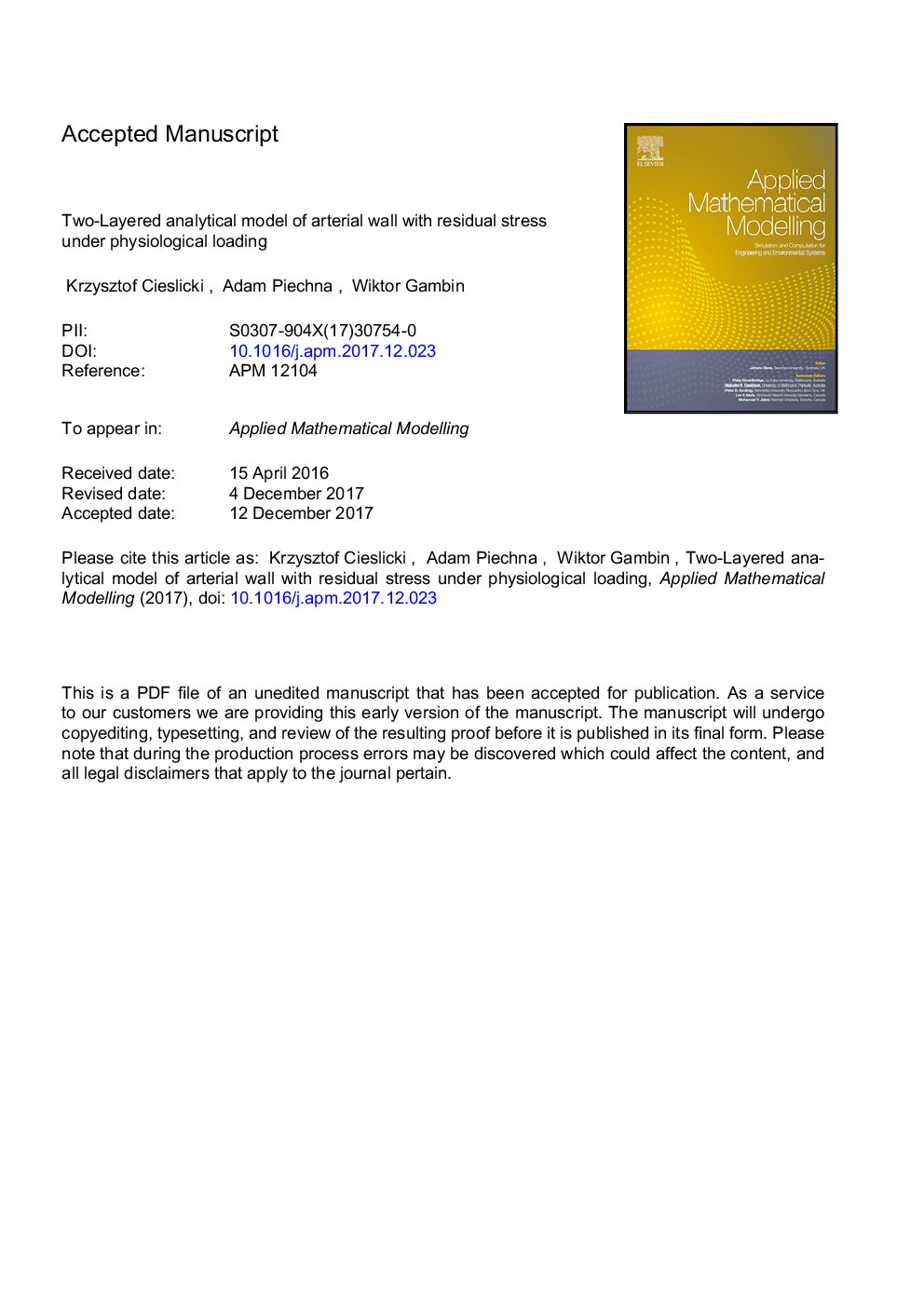| Article ID | Journal | Published Year | Pages | File Type |
|---|---|---|---|---|
| 8051767 | Applied Mathematical Modelling | 2018 | 24 Pages |
Abstract
A large number of arterial wall models of different degrees of complexity have been proposed in the literature. However, there is no reported analytical artery model which takes into account the residual stress effects. Therefore, we propose and study a novel two-layered model of the artery with two types of residual stress. A geometrical nonlinearity coming from a thinning of the layers due to the residual stresses and the pressure load was taken into account. The material properties of the layers were described by several Young moduli depending on the range of the strain. The results obtained were compared with finite element modeling based on the nonlinear stress-strain relation of the media and adventitia layers of the Common Carotid Artery taken from the literature. We show that the residual preloading forces significantly change the overall stress distribution in the arterial wall. In particular, the residual stress coming from bending plays the leading role in stress homogenization and is determined by the opening angles. In turn, overlapping reduces the circumferential stress in the weaker media layer, thus protecting it from overstretching and rupture.
Related Topics
Physical Sciences and Engineering
Engineering
Computational Mechanics
Authors
Krzysztof Cieslicki, Adam Piechna, Wiktor Gambin,
